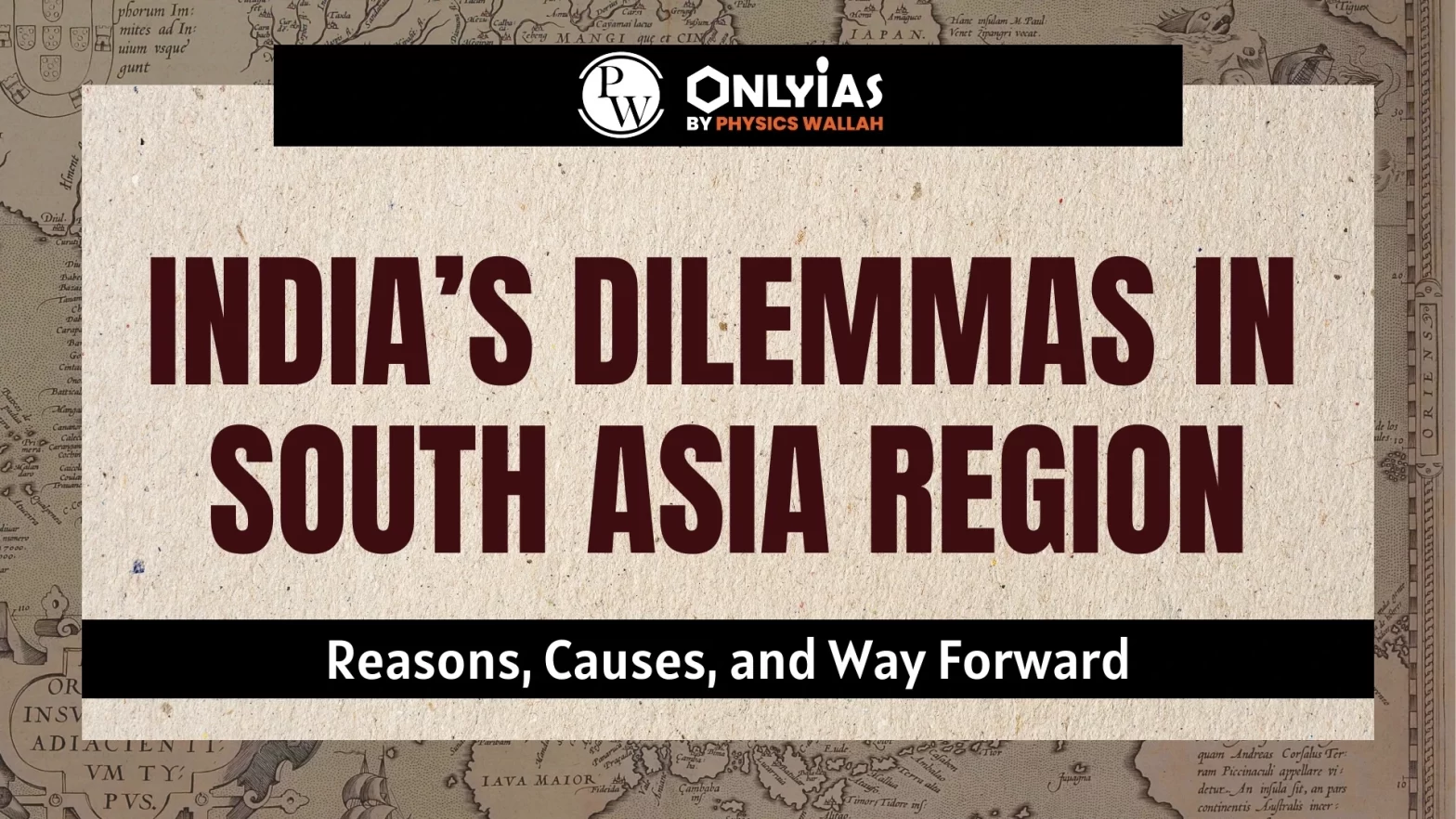Context: This article is based on an Editorial “India’s growing neighbourhood dilemmas” Which was published in the Hindu. India is facing challenges in its neighbourhood, while China is becoming a major rival and influencer in the South Asia region.
- Such a challenge is impacting contemporary Indian foreign policy that has an ambitious vision to become the leader of the global South, be an arbiter in global geopolitical contests, and become an important part of world politics.
| Relevancy for Mains: India’s Dilemmas in the South Asia Region: Reasons, Causes, and Solutions. |
What are the reasons behind India’s dilemmas in the South Asia region?
- The Rise of Politically Anti-India Regimes in South Asia: The South Asian Countries are showing differences with India.
- The Maldives is anti-India in an instrumental sense.
- In Bangladesh, a Khaleda Zia-led government, which goes to the elections next year, could turn out to be ideologically anti-India.
- Growing Influence of China in the Region:
- Structural Dilemma: This growing influence is causing a Structural Dilemma in India.
- Resource Provider: South Asia is one of the least interconnected and poor regions of the world, resulting in tilting towards China which is providing them with material needs.
- While India’s ability to meet those needs is limited.
- Availability of Choice: With the interference of China in the region and expressing itself as a no-frills non-normative alternative, it has become an alternative to India.
- India has had a normative and political approach towards the region, which the states had to agree upon due to the absence of choices.
- For the first time in modern South Asian history, the region is a ‘norms-free-zone’.
- A Non-Resident Power: China is the region’s non-resident power which benefits from the absence of complications — ethnic, linguistic, religious — arising out of being a resident power.
- While India, as the resident power in South Asia faced above mentioned spillovers.
- Geopolitical Lock: China is promoting the Belt and Road Initiative (BRI) and other Chinese projects in the region.
- China is reaching out to South Asian states and trying to build its influence such as in Taliban-led Afghanistan, military-ruled Myanmar, and crisis-hit Sri Lanka.
- Settling border disputes with its neighbors (excluding India), such as in Bhutan.
- India does too, but the overall impact of China’s outreach is far higher than that of India.
Must read the linked article India’s Response to China’s Naval Expansion in the Indian Ocean here.
What are the causes behind the dilemmas faced by India?
- The Regional Geopolitical Architecture: Contemporary South Asia is characterized by a diminishing presence of the U.S.
- In the absence of the U.S., China has come as a ‘geopolitical buffer’, and is using the ‘China card’ in their foreign policy assertions against India.
- One-Track Policy: It exhibits a deep-seated status quo bias in dealing with the region’s domestic politics and the multiplicity of actors/power centers therein.
- However, such a policy generates path-dependencies often alienating other powers.
- Mistaken Assumptions: India believes that South Asia minus Pakistan would be amenable to India (However, this policy has not exactly panned out the way imagined by India).
- India also believes that India’s special ties (culture, soft power, history, and ethnicity) with the region would give it an advantage over China.
The Path Ahead
- A Realistic and Pragmatic Framing: It would help India to deal with the reality that South Asia and its balance of power have changed fundamentally. China has emerged as a serious contender for regional primacy.
- Constructive Engagement: India needs to proactively pursue the involvement of friendly external actors in the region.
- It would help India to deal with the possibility of the region becoming Sino-centric.
- Flexible Diplomacy: India needs to pursue flexible diplomacy to engage multiple actors to regain neighbors’ trust and dilute the anti-India attitude.
- Increase in Diplomatic Pursuits: India needs to work on the shortage of sufficient diplomats to implement the foreign policy.
- Innovative Measures: India needs to take innovative actions after considering all situations.
Conclusion:
India’s dilemmas in the South Asia region call for a strategic overhaul, involving realistic approaches, collaboration with neighboring nations, adaptable diplomacy, increased diplomatic efforts, and innovative solutions to effectively navigate the complexities posed by China’s expanding influence.
![]() 8 Dec 2023
8 Dec 2023

